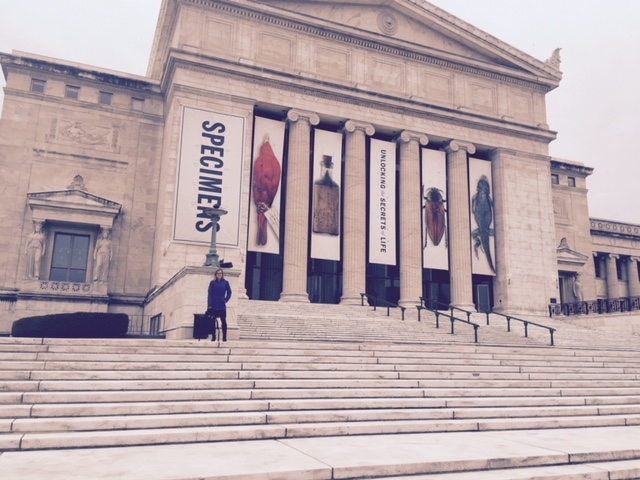Dr. Greer leads team to conference

Dr. Kirsten Greer, Canada Research Chair in Global Environmental Histories and Geographies and assistant professor of Geography and History, recently led a research team to the American Society of Environmental Historians Conference (ASEH) in Chicago and to the American Association of Geographers (AAG) Annual Meeting in Boston. At the ASEH, Greer and Dr. Adam Csank from the University of Nevada – Reno, presented findings from their Social Sciences and Humanities Research Council of Canada funded project, Empire Trees Climate: Towards Dendro-Provenancing in the North Atlantic.
Making the most of their time in Chicago, Greer and Csank conducted preliminary research on the historical connections between Chicago and Northern Ontario in the nineteenth century by visiting the Field Museum, the History Museum, and the Nature Museum. One objective of the initial research is to determine if timbers from northern Ontario were used in the rebuilding of Chicago after the Great Fire of 1871. Greer and Csank documented primary source materials at the archives and identified historical buildings from the time period, which included a visit to a timber salvaging company to sample wood associated with the St. James Catholic Church, built in 1875.
In Boston, Greer organized a special session for the AAG onWhat does it mean to do interdisciplinary research on past environments? Exploring mixed methods in geography through the lens of critical physical geography.
Team members of the, Empire Trees Climate: Towards Dendro-Provenancing in the North Atlantic project presented various papers on the project, including Margot Maddison-McFadyen’s paper, Mary Prince, Cavendish Hall, and historic timber, which won second prize for the Historical Geography Specialty Group’s student paper award. Maddison-McFadyen is teaching the third-year History course, Narratives of Colonial Slavery, which explores The Middle Passage and colonial enslavement in an analysis of selected British slave narratives and Canadian neoslave narratives.
